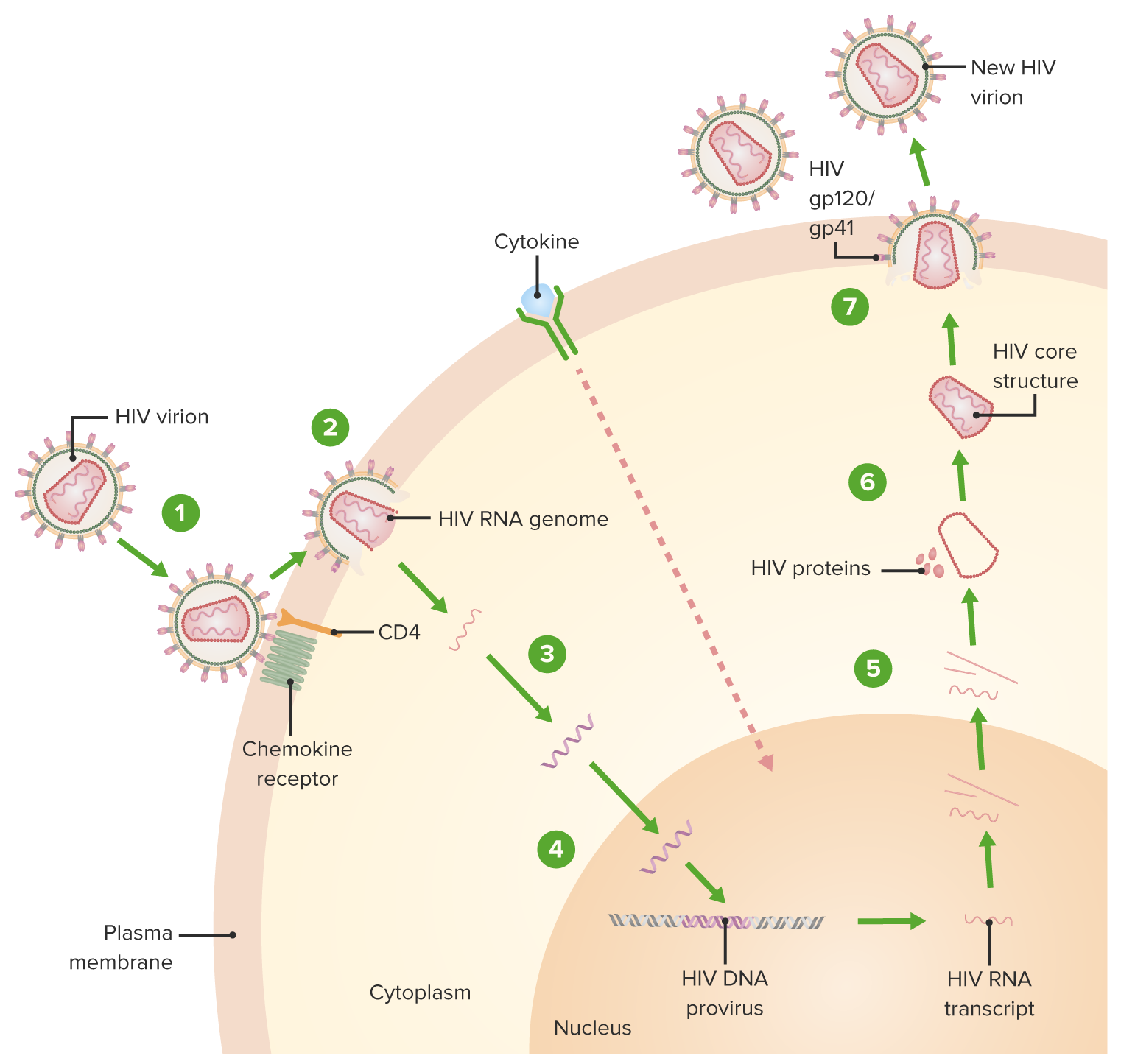Playlist
Show Playlist
Hide Playlist
Anti-HIV Agents: Non-nucleoside Reverse Transcriptase Inhibitors (NNRTIs) – Antiviral Drugs
-
Slides Anti-Virals Antimicrobials.pdf
-
Download Lecture Overview
00:01 Let’s move on to the NNRTIs, it’s a different category within the reverse transcriptase family. 00:06 These NNRTIs bind to a site other than the nucleoside-based or nucleotide-based reverse transcriptase inhibitors. 00:16 They don’t require phosphorylation to be activated which is an important difference between this and other drugs. 00:23 There's no cross resistance with the other NRTIs and if it’s used as monotherapy resistance would occur rapidly via mutation in the pol gene. 00:35 Now I wanna point out though that this is not a category of drugs that’s used on its own it tends to be used as part of a regimen. 00:44 The first generation NNRTIs include these drugs - efavirenz, neviripine, and delavirdine. 00:53 Let’s start with the first one which can be given once a day. 00:57 It’s metabolized by cytochrome and drug interactions are common with this medication - be aware of that. 01:04 Toxicity and side effects can occur, can include the typical neurological symptoms such as CNS dysfunction. 01:11 You can get peripheral neuropathies as well. 01:14 In terms of dermatologic reactions we often will see or I should say we sometimes will see a skin rash. 01:21 Now, we don’t use this medication in pregnancy because it can potentially be teratogenic in the first trimester so be very aware of giving this medication to women in their child-bearing years who may get pregnant during therapy. 01:36 In terms of your serum lipids it can increase your serum cholesterols or blood cholesterols so you'll have to monitor that as part of your panel of blood work. 01:46 Neviripine is a commonly used drug in heart therapy and in three-drug regimens. 01:52 It’s effective in preventing vertical transmission, so vertical transmission refers to transferring the virus from mother to child. 02:02 Toxicity and side effects - first of all, skin reactions so we see skin rash in about up to a quarter of patients. 02:11 We can see a Stevens-Johnson syndrome and you'll have to take a look at the dermatology lectures, I believe it’s Dr. Raj who does an excellent talk on the Stevens-Johnson syndrome and toxic epidermal necrolysis can be seen in patients who's on this drug. 02:28 Drug interactions are a major concern with this medication. 02:31 Why is that? It’s because this particular drug is metabolized not just through cytochrome P450 3A4, but also through 2D6. 02:42 And if you go back to our early pharmacology lectures you will realize that 3A4 and 2D6 comprise the majority of drug metabolism pathways in the human body. 02:53 Blood levels are increased with drugs like ketoconazole or the azole antifungal agents and some antibiotics including the macrolides as well. 03:05 Blood levels are decreased by taking oral antacids, by DDI, by drugs like Dilantin or phenytoin, rifampin and others. 03:16 So you have to be very aware of drug interactions when you're giving this medication. 03:21 The other problem with this pill is that it will affect your warfarin levels through the 2D6 pathway so you have to monitor your INRs if they're also on warfarin with this drug. 03:33 Toxicity can include skin problems such as skin rash and that can occur in up to a 5th of patients and of course, in terms of patients who are pregnant, this can be a potentially teratogenic agent so you cannot use it in patients who may get pregnant. 03:49 Let’s move on to the second generation of these drugs, the second generation NNRTIs. 03:54 Here's three of the major ones, there's actually twelve in this category but these are the three that we’ll focus on today. 04:02 Etravirine is a medication that is both a substrate and an inducer of cytochrome 3A4, 2C9, and 2C19, so again, a lot of potential drug interactions. 04:16 Toxicity of this medication can include diarrhea, you can get skin rash from this medication, you can - it’s a teratogenic agent so you don’t wanna use it in patients who are pregnant or who are likely to get pregnant and of course when we look at our panel we have to add serum cholesterol to our panel. 04:35 We have to add triglycerides and we have to add liver function tests to our panel to monitor for any signs of sub-acute or acute toxicity.
About the Lecture
The lecture Anti-HIV Agents: Non-nucleoside Reverse Transcriptase Inhibitors (NNRTIs) – Antiviral Drugs by Pravin Shukle, MD is from the course Antimicrobial Pharmacology.
Included Quiz Questions
Which drug is a non-nucleoside reverse transcriptase inhibitor?
- Efavirenz
- Lamivudine
- Zalcitabine
- Tenofovir
- Emtricitabine
Which medication is a non-nucleoside reverse transcriptase inhibitor that is used more commonly to prevent vertical HIV transmission at birth?
- Nevirapine
- Emtricitabine
- Delavirdine
- Etravirine
- Lamivudine
Coadministration of which drug will increase blood levels of delavirdine?
- Macrolides
- Phenytoin
- Rifampicin
- Haloperidol
- Carbamazepine
Customer reviews
5,0 of 5 stars
| 5 Stars |
|
5 |
| 4 Stars |
|
0 |
| 3 Stars |
|
0 |
| 2 Stars |
|
0 |
| 1 Star |
|
0 |





